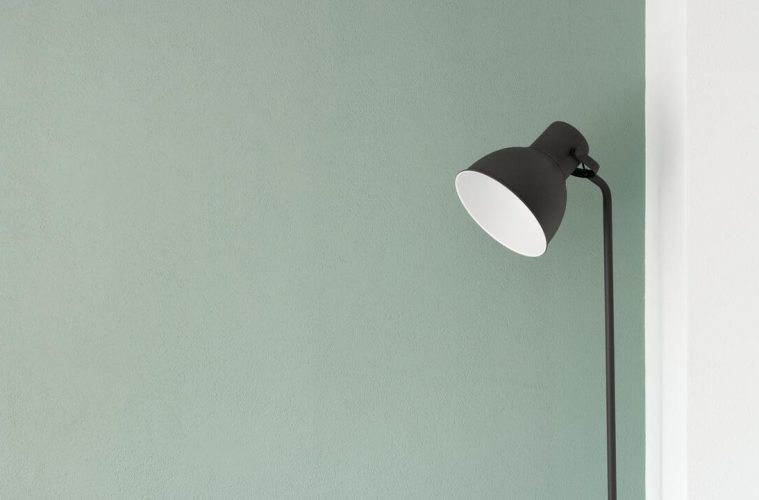Feature walls might be the missing piece of your interior-design puzzle. There are a few ways to go about feature walls, some more difficult than others. When done well, a feature wall can transform a space. We’ve got some quick tips:
How to create a feature wall
- The space in a room that your eye is immediately drawn to is the one to highlight. The point of a feature wall is to give your eye a starting point from which to move through the rest of the space. Existing design features like mantles or fireplaces are a great place to start. You should avoid walls with doors, though windows depend on size and what else is inside the room.
- Choose bold colours, especially in neutral rooms with cool tones. Strong contrasting shades are dramatic and create depth. However, if the room is dark already, go lighter and brighter.
- After you’ve created your feature wall, your furniture needs to be places strategically to get the most out of it. Choosing the wall behind large furniture like couches and beds works well. However, be careful not to obscure too much of the wall with things like large cabinets. Look for a balance.
Mirrors
A mirror wall can play with space, light and colour. Strategic placement of mirrors can work well only if you take into account the colour, style, light and size of the room. For example, place them opposite windows to double up the light and space. Similarly, be careful of placing mirrors opposite a bland, empty or otherwise unsightly corner or wall.
In addition, don’t be scared to go big! Less isn’t always more. Large mirrors placed well, like opposite a beautifully curated living room, doubles up on whatever you’ve worked hard to design in the room already.
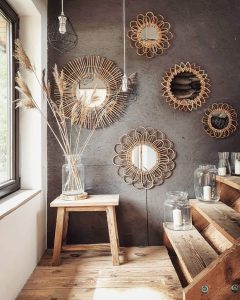
decoholic.com
Wallpaper
Wallpaper gets a bad rap – when done well, it can look sophisticated and stylish. It’s more difficult to get right than other feature wall designs, though. Decide on what effect you want the wallpaper to have: create depth, add light, contrast a bright window or light furniture, create the illusion of texture?
Also be mindful of the size of the room if you choose patterned wallpaper. Patterns can make rooms feel bigger or smaller. It’s important to align the pattern with how large you want the room to feel.
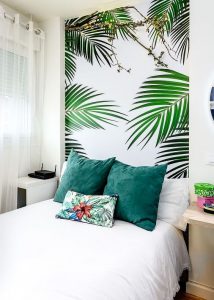
Shelterness.com
Wood Trim
You can DIY a huge range of patterns on your wall with wooden trims. These can be painted over in one colour, or later accented with a different colour. Traditional square and rectangular designs to create the feeling of panels are popular, but angular, geometric designs can look great too.
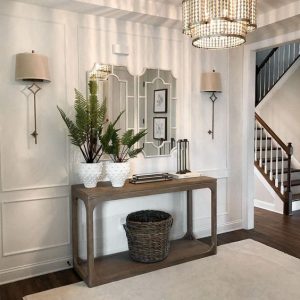
DIY with paint
Bold colours alone can create a focal point. As long as it fits into the colour palette for the room, it can make for an easy feature wall and make a space feel more dynamic. Don’t just consider solid colours: metallics or textured paints can work well.
Neutral rooms are perfect for a paint feature wall. Don’t be afraid of bold colours but consider how the colour of the rest of the walls. In this regard, contrast works best, with bold or dark colours beside neutral or medium tones.
Selecting the best wall for the feature is important, too. For example, dark paint on a wall with a bright window can create an overwhelming contrast. Dark colours in an already very dark room are also generally a bad idea.
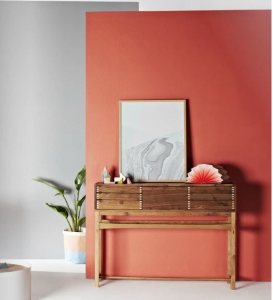
SEE MORE: THE HISTORY OF WALLPAPER

